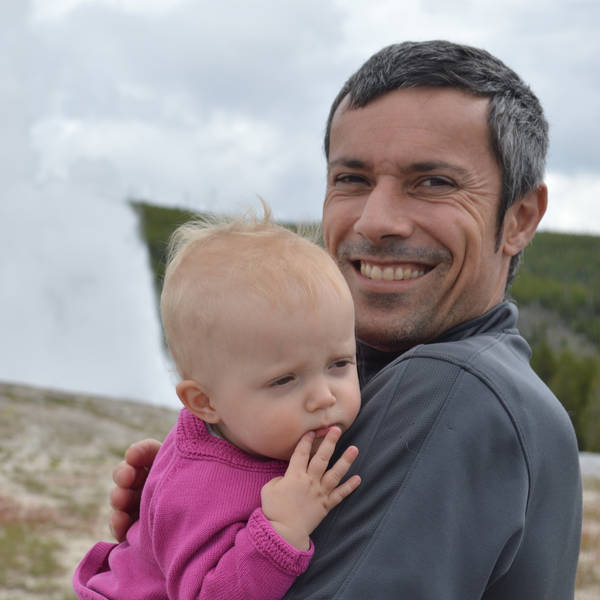Summer 2023
Pristine No More
Researchers are detecting traces of human waste in some of the national parks’ most remote lakes and streams.
As an avid outdoorswoman who is passionate about environmental health, Laura Scott found the perfect kind of fieldwork for her doctorate. For much of a summer, she would load up her insulated backpack with empty bottles and head up one of Rocky Mountain National Park’s numerous trails. Some of the hikes were arduous and long, and on more than one occasion, conditions turned dicey. “I would hear thunder in the distance and think like, ‘Oh, I can outrun the storm,’ and then find myself in a situation where I shouldn’t be,” she said. At both some of the most popular and some of the least-visited spots in the park, Scott would fill her bottles with water, then rush back with a pack dozens of pounds heavier and quickly refrigerate her samples before analyzing their contents.
What was Scott looking for in the water of these postcard-worthy lakes and streams? Human fecal contaminants — in other words, visitors’ poop.
Millions of people visit national parks each year, and managing the resulting human waste is a tricky endeavor for the National Park Service, especially in the backcountry. Some remote park outhouses require regular emptying by helicopters, and rangers too often perform the thankless job of picking up the output on the side of a trail, along with bits of toilet paper and the occasional soiled unmentionables. Recent studies show, though, that the contamination extends well beyond those visible deposits and that traces of human excrement can be found far and wide in national park waters.
Concentrations varied, but all 56 surface water samples Scott collected in the summer of 2019 contained fecal indicator bacteria, and in many cases fecal coliform colonies were “too numerous to count,” according to a recent paper based on her doctoral work. E. coli was detected in more than three-quarters of the samples, but since the bacterium can be found in the intestines of both people and animals, it’s not a definitive indicator of human waste. So Scott also looked for antibiotic-resistant bacteria. Scott notes that many bacteria would have developed antibiotic resistance even without any human involvement, but Scott and her colleagues did find a correlation between how busy a campsite was and the relative abundance of bacteria resistant to antibiotics such as levofloxacin and vancomycin, which are used to treat bacterial infections.
“I was surprised by the amount of pharmaceuticals and the types of pharmaceuticals that were found in some of these backcountry lakes — ibuprofen, estrogen, you know, things that definitely are not coming from natural sources,” said Scott M. Esser, director of Rocky Mountain’s Continental Divide Research Learning Center and a co-author of Scott’s paper.
Scott also looked specifically at the efficacy of a urine-diverting toilet that was just installed at Longs Peak Boulderfield near several primitive campsites. The toilet diverts liquids into an alpine creek while solids are directed to a holding pit by way of a conveyer belt. This new kind of pit toilet is potentially appealing from a logistical standpoint because it requires less frequent emptying by staff, but using genetic markers and other fecal metrics, Scott found that the system did not prevent feces from contaminating downstream waters.
There does become a tipping point where maybe people start to say, ‘I need to be part of this solution.’
Scott’s results in Rocky Mountain were not completely unexpected as they follow recent research by her and others in several national parks. Over the past decade, David Clow, a research hydrologist at the U.S. Geological Survey, and his colleagues published studies of the impact of backpackers and pack animals at Sequoia, Kings Canyon and Yosemite national parks and found that concentrations of fecal contaminants there were relatively low but spiked during storms when runoff carried organic matter into streams. “Storms are really where the action is,” he said.
The goals of Scott’s research in Rocky Mountain were to figure out exactly where backcountry visitors “go” — in two senses of the word — to help park staff better manage these remote areas and also to provide insight into potential public health concerns. So how dangerous is the contamination? Concentrations of fecal coliforms at many alpine lakes did exceed thresholds set by the Environmental Protection Agency, but visitors’ exposure remains minimal as long as they treat the water before drinking it (which park staff advise) and don’t swim for extended periods of time.
Still, Rocky Mountain is known as a headwaters park — the Colorado River has its source there, and the park’s streams provide water to Front Range towns including Estes Park — so monitoring and protecting water quality are paramount. In theory, more backcountry toilets could help, but those have their own impact on wilderness, and staff digging up new pits regularly encounter others decommissioned years ago. “Since we’re a park that’s been here a long time, those wilderness crews are running out of spaces in our popular areas,” said Kyle Patterson, a management specialist at the park.

6 Tips to Keep Parks — and Yourself — Safe
You can set a good example for how to behave on public lands. These tips are sensible and easy to follow, and they’ll help you be a good park…
See more ›Figuring out exactly where to site new privies is also problematic because visitors’ urges can strike anywhere. Over the past three years, teams of volunteers documenting human waste and social trails often found toilet paper and “deposits” at the end of these unsanctioned trails, Esser said. “That’s where we started to be like, ‘Oh, my gosh, this is kind of everywhere,’” he said. When park staff placed triangles on a map to indicate the location of human waste along the trail to Sky Pond, triangles covered almost the length of the trail but also strayed some distance on either side of it. “For the more relatable public presentations, we change those to the classic poop emojis that look like swirled ice cream,” Esser said. “You can imagine the effect that we get from that visual.”
An understanding of the cumulative impact is what park staff want visitors to take away from the outreach. They also hope for a behavior change. So-called wag bags — puncture-resistant dog bags for humans — are available at some of the park’s trailheads, and they’re now offered to backcountry campers when park employees hand them their wilderness permits. Picking up after themselves still makes some people squeamish, but Patterson takes comfort in the fact that not long ago, dog owners were just as reluctant to bag the droppings of their pooches (which are not allowed on the park’s trails).
“There does become a tipping point where maybe people start to say, ‘I need to be part of this solution,’” Patterson said.

National Parks
You can read this and other stories about history, nature, culture, art, conservation, travel, science and more in National Parks magazine. Your tax-deductible membership donation of $25 or more entitles…
See more ›Meanwhile, Scott said her work at Rocky Mountain can be cheaply scaled up to be done at a lot of parks. She and her colleagues are working on a method to run one water sample through several tests at once, which would speed up the analysis considerably. Now a USGS geneticist, she’s in talks with national parks in Alaska and beyond to try out that approach. She said the hardest part of the monitoring is the sampling, but it’s not technically challenging and could easily be conducted by citizen scientists. What’s more, participating in this work would help volunteers grasp the extent of the problem, Scott said, which will likely worsen as the number of people venturing into parks’ wilderness continues to grow.
“This contamination is very unseen, but it has very measurable effects,” Scott said. “And so, because it’s hard to see and it’s intangible, a lot of people look over it, but it will become more and more important in the coming years.”
About the author
-
 Nicolas Brulliard Senior Editor
Nicolas Brulliard Senior EditorNicolas is a journalist and former geologist who joined NPCA in November 2015. He serves as senior editor of National Parks magazine.



